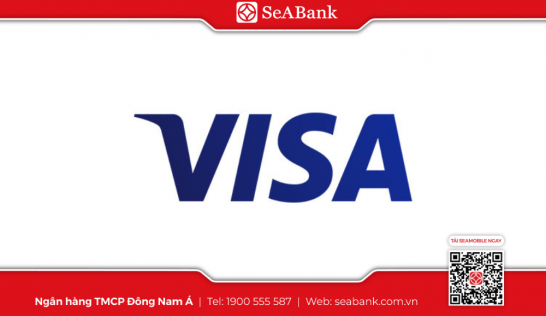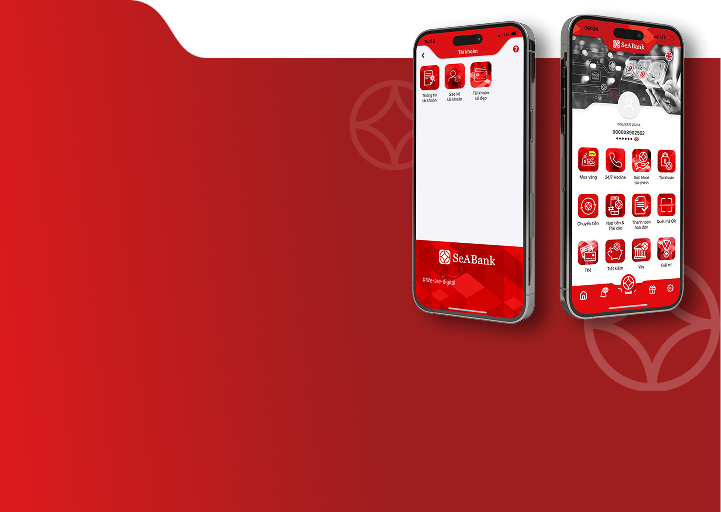News
What is a debit card? Benefits of using a corporate debit card at SeABank
11/07/2025
Debit cards are one of the most popular cashless payment methods today. So what is a debit card? Let's find out.
Debit cards are a type of payment card that is commonly used today. Debit cards bring many benefits to users, including fast, safe, convenient, cost-saving payments, etc. So what is a debit card and why should you use it? Let's find out in the article below from SeABank.
What is a debit card?
A debit card, also known as a Debit Card, is a type of payment card issued by a bank. When the cardholder uses a debit card to make purchases or pay for services, the transaction amount will be deducted directly from the cardholder's account.
Accordingly, a business debit card (Visa Business Debit Card) is also a type of payment card issued by a bank to a business. A business debit card has similar features to a personal debit card, but is specifically designed for businesses.
Debit cards are widely used for many everyday payment purposes.
Why should businesses use Visa Business Debit Cards?
Currently, there are many banks providing debit cards for businesses, notably SeABank. So, why should businesses use debit cards? Visa Business Debit Card at SeABank, please refer to the reasons below.
Support businesses to manage cash flow optimally and effectively
Visa Business Debit Card from SeABank is a powerful financial tool that helps businesses maintain and manage cash flow effectively. Through the feature of direct deduction from the business account, cardholders can quickly track and control spending, helping to avoid falling into a state of financial uncontrollability.
Is a safe, convenient and fast means of payment
Visa Business Debit Card is secured by various advanced technologies, thereby helping to protect business assets more safely. At the same time, the card can be used for payment anywhere, anytime, creating speed and convenience for businesses.
Simple and quick procedure, saving maximum time and cost
Businesses can register to open a Visa Business Debit Card directly at SeABank transaction counters. The registration procedure is simple and quick, only requiring providing the necessary documents according to the bank's regulations.
This helps businesses save maximum time and costs, focusing on core business activities without having to worry about complicated processes.
Enjoy privileges from SeABank's incentive programs
Businesses using Visa Business Debit Card will enjoy many attractive incentives from SeABank's promotional programs. This helps to create more value for the business's financial strategy to be more optimized and effective.
Unlimited number of cards issued to businesses
Businesses can issue multiple Visa Business Debit Cards at SeABank without worrying about the limit on the number of cards. This helps businesses easily expand or adjust the scale of card usage according to the actual business needs of the business.
SeABank does not limit the number of corporate debit cards issued.
See also: Detailed instructions for opening a credit card for business owners
Proactively manage card activities on SeANet digital banking application,SeAMobileBiz
Businesses can proactively manage Visa Business Debit Card activities on digital banking applications SeANet, SeAMobileBiz, include:
- Check card information and card statements when needed.
- Manage transaction limits and spending limits on your card.
- Lock/unlock card.
- Change transaction password.
- Transfer money, pay bills,...
With the above outstanding benefits, Visa Business Debit Card is a comprehensive, effective and convenient cashless payment solution for businesses.
Features and benefits of using a corporate debit card at SeABank
Visa Business Debit CardSeABank's card is a comprehensive, efficient and convenient cashless payment solution for businesses. The card offers many outstanding benefits, including:
- Convenient and fast payment at card acceptance points (POS) and online.
- Can perform ATM transactions quickly such as withdrawing money, checking balance, transferring money, changing PIN, and checking the last 5 transactions.
- SeABank Visa Business Debit Card has a validity period of 5 years. When the card expires, businesses can renew or reissue the card.
- Businesses can issue multiple SeABank Visa Business Debit Cards without worrying about card quantity restrictions.
Managing business finances is easy with SeABank business debit card
How to register for SeABank business debit card
To register for a Visa Business Debit Card at SeABank, you can go directly to branches/transaction offices nationwide for instructions. In addition, you can also refer to the terms of use, applicable subjects and necessary documents to register for a Visa Business Debit Card at SeABank as follows:
Terms of Use
- Corporate customers have payment accounts opened at SeABank.
Applicable objects
- Corporate customers who need to open a payment account at SeABank and use non-cash payment methods.
Profile to register
- Documents proving the legal status of the Organization according to the provisions of law.
- Documents proving the legal representative status of the account owner according to the provisions of law.
- Application for Visa Business debit card issuance according to bank regulations.
The procedure for registering a corporate debit card at SeABank is very simple.
Conclude
Above is the information about Debit card businesses and the benefits of using SeABank corporate debit cards. If your business is looking for a comprehensive, efficient and convenient cashless payment solution, SeABank corporate debit cards are a suitable choice.
Take advantage of the benefits of SeABank's corporate debit card to simplify payments, manage expenses and achieve your business goals.
For more information about SeABank business debit cards, please visit the website or contact Hotline 1900.555.587 (Customer Service) or 1900.599.952 (Business Service).
Related News
Visa Credit Card: Conditions, Types, and Usage Tips 29/08/2025
Thẻ visa ảo là gì? Lợi ích và cách mở thẻ tại SeABank 19/08/2025
6+ Things You Should Know When Using and Paying with a Visa Card 01/08/2025
HOW YOUR SOCIAL INSURANCE SALARY AFFECTS YOUR FUTURE BENEFITS 17/07/2025
3 Simple Ways to Switch from Magnetic Stripe ATM Cards to Chip Cards 08/07/2025

Visa Credit Card: Conditions, Types, and Usage Tips
A Visa Credit Card is not only a convenient global payment tool but also helps you control spending, enjoy promotions, and build a personal credit history. If you’re considering applying for a Visa Credit Card, take a few minutes to read this guide to fully understand the requirements, card categories, and important usage tips.
29/08/2025
Read more

Thẻ visa ảo là gì? Lợi ích và cách mở thẻ tại SeABank
Không cần chờ in thẻ vật lý hay ra ngân hàng làm thủ tục phức tạp, bạn có thể sở hữu một chiếc thẻ Visa ảo chỉ sau vài phút thao tác ngay trên điện thoại. Vậy thẻ Visa ảo là gì? Có gì khác biệt với thẻ truyền thống? Và cách mở thẻ Visa ảo tại SeABank như thế nào? Bài viết dưới đây sẽ giải đáp toàn bộ thắc mắc này – cùng những lợi ích vượt trội bạn không nên bỏ lỡ.
19/08/2025
Read more

6+ Things You Should Know When Using and Paying with a Visa Card
In the digital era, Visa cards have become a globally popular payment method. However, to use a Visa card properly, securely, and to maximize its benefits, you need to understand how it works, how to pay, how to protect your information, and important notes that come with it. The following article outlines more than six key things you should know when using and paying with a Visa card.
01/08/2025
Read more







